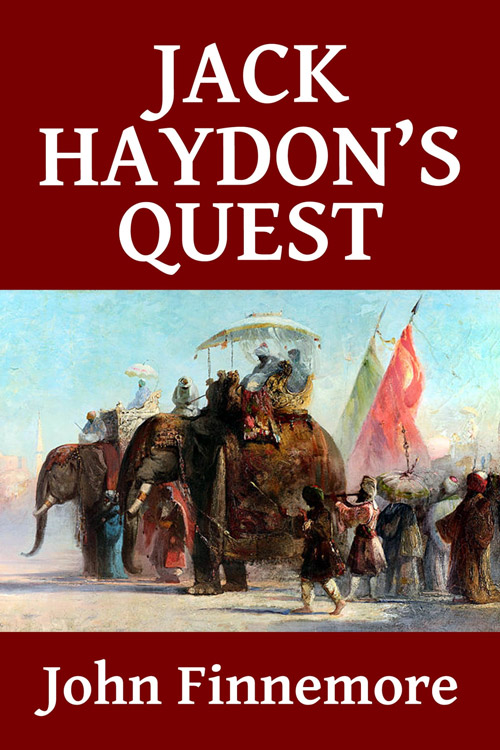
Jack Haydon’s Quest
As he stepped along the highway, moving with the effortless grace of a well-built athlete, he looked at the very picture of a handsome English lad at one of the finest moments of his life, the point where youth and manhood meet. The road he followed was called a high road, but the name clung to it from old use rather than because of present service. Eighty years before, it had been a famous coaching road, along which the galloping teams had whirled the mails, but now it had fallen into decay and was little used except by people passing from Rushmere to Longhampton.
A mile from the school, it ran across a lonely, unenclosed piece of heath, the side of the way being bordered by clumps of holly, thorn, and furze. Halfway across this lonely stretch of country, Jack was surprised to see a man step from behind a thick holly bush and place himself directly in the lad’s way. As Jack approached, the man held up his hand. “Stop,” he said, “I want to speak to you.” Jack stopped in sheer surprise and looked at the speaker in wonder. What could the man want with him? At a glance, he saw the man was not English, though he could not place the type upon closer examination.
The stranger’s skin was darker than an Englishman’s but not darker than many a Spaniard’s. His eyes were large, black, and liquid; their look was now crafty and a trifle menacing; his hair was lank and intensely black. In build, he was very slight, with thin arms and legs. Jack thought he might have been a Hindoo if he had been a little darker.
Read or download Book
John Finnemore
John Finnemore (1863–1915) was a British school teacher and writer of fictional novels and history and geography texts of countries – most are for younger readers.
Biography.
Finnemore contributed stories to popular boys’ magazines of his time, such as The Boy’s Own Paper and Boys’ Realm. Still, he is best remembered for his books about Teddy Lester and his friends at Slapton, a fictitious English public school. The stories have a strong sporting focus, with Lester excelling at rugby, cricket, and other games. He also wrote a few adult novels. Finnemore was also a writer of early Boy Scout fiction. There is no existing documentation of Finnemore’s life, and the following account has been constructed from returns of the Census in the United Kingdom and official Birth, Marriage, and Death records held at the General Register Office (GRO) for England and Wales.
John was born in the third quarter of 1863 in Birmingham, England. His father, William, worked in the Birmingham pen trade, and his elder brother was the artist Joseph Finnemore. John’s mother, Charlotte, died in 1878 when he was 15 years of age, and his father did not marry again. The family must have been reasonably wealthy, and as a result, John received a good education because, at 17, he was already working as a school teacher. Five years later, he married Eliza Emily Pearson, the same age as him, and a teacher at 17. Eliza came from a Northampton family resettled in Birmingham before she was seven. After her marriage, Eliza dropped her first name and retained her maiden surname to become Emily Pearson Finnemore. She became an author of mainly religious works published by the Christian Knowledge Society (now known as SPCK). There were no children from the marriage.
The 1881 Census shows Finnemore living at the family home at Aston, Birmingham, but ten years later, he is found living with Emily at the tiny hamlet of Little Bealings in Suffolk, where his occupation is shown as a schoolmaster. Ten years later, the couple are found living in Wales in the village of Blaenpennal in Cardiganshire. The 1891 Welsh Census indicates that John was a speaker of the Welsh language, which, no doubt, was an essential skill he had to acquire since, again, his occupation is shown to be a “schoolmaster and author.”
The biography of T. Hughes Jones (1895–1966) records that Jones attended the Tan-y-garden elementary school, Blaenpennal, where his schoolteacher was John Finnemore until 1903. It was around this time that Finnemore’s first published works started to appear.






